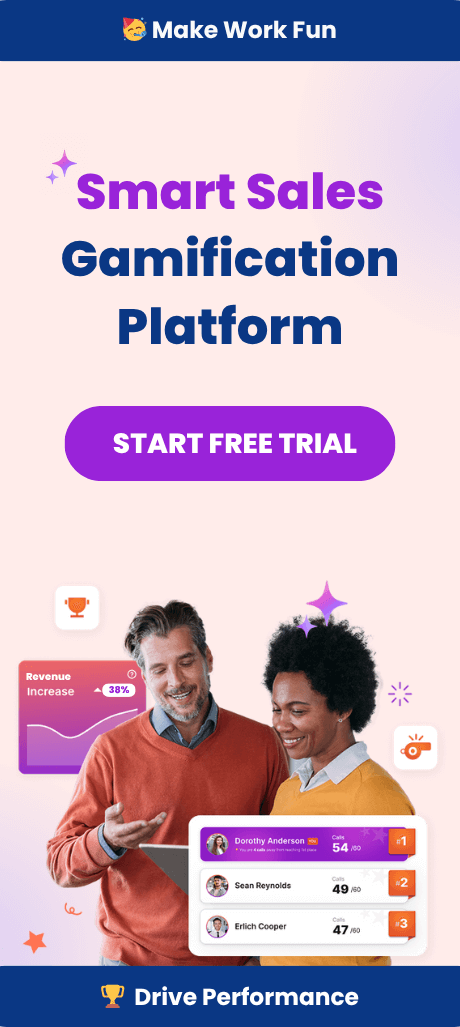Rethinking Digital Leaderboards for Teams
In a world where measurable performance and engagement sit at the heart of high-performing organizations, the concept of digital leaderboards is undergoing rapid transformation. As business models evolve, so do the tools we use to foster motivation, transparency, and a sense of achievement within teams. For executive leaders—Sales VPs, Enablement Leads, RevOps Directors, and CEOs—the strategic use of digital leaderboards isn’t just about rankings and points. It is about cultivating a culture of healthy competition, recognition, and ongoing data-driven improvement that sustains performance in an era of constant change.
The Evolving Intent Behind Digital Leaderboards
Traditional leaderboards have long been associated with competition—an effective, albeit sometimes blunt, instrument for motivating sales teams. However, the objectives have shifted. Today, digital leaderboards are valued less for sparking rivalry and more for their role in transparency, goal alignment, and building shared accountability among distributed team members. The modern executive wonders: How can leaderboards not just rank performance but actively reinforce company culture and drive real workplace connection?
The answer lies in the pivot toward customizable solutions that reflect the unique priorities and culture of each organization. No longer one-size-fits-all, digital leaderboards have become highly adaptable. They can spotlight team milestones, highlight collaborative achievements, and tie individual progress to collective objectives. Their power lies in visualizing progress in real time while providing a constant, digital nudge toward the right actions—whether it be reaching sales quotas, onboarding new hires, or accelerating skill development.
Why Leaderboard Customization Matters for Engagement
The modern workforce is diverse in skill and motivation. A static leaderboard, solely ranking top billers, risks sidelining steady contributors or demotivating new hires who face an uphill climb to the top. Customizable leaderboards address this problem at its root. By tailoring the KPIs, time frames, and reward structures, organizations can ensure a broader spectrum of employees see their progress and effort reflected.
For example, a sales organization targeting both volume and quality can recognize reps who excel in customer satisfaction alongside those driving revenue. Or, a contact center might use separate dashboards for response-time metrics versus upsell targets. The flexibility to configure leaderboards to promote a mix of competitive and collaborative behaviors is key to sustaining engagement across all segments of your workforce.
- Recognition of Diverse Strengths: Custom leaderboards can showcase different dimensions of performance beyond just quota attainment.
- Agility in Goal Setting: Metrics can be updated swiftly to align with shifting business priorities or to spotlight emerging KPIs.
- Improved Fairness: By reflecting various roles and levels of experience, leaderboards can be made equally relevant to all team members.
When built into a thoughtful recognition strategy, leaderboards supplement—not replace—personal feedback and ongoing coaching. They act as a public, transparent layer of affirmation but remain only as effective as the context and intent behind their design.
Leaderboards and the Data-Driven Performance Mindset
Performance management in progressive sales organizations is now inextricable from real-time data insights. Smart leaderboards are a natural extension of this trend, offering continuous visibility into progress against KPIs at individual, team, and organizational levels. When fully integrated with sales tech stacks and CRM platforms, digital leaderboards provide a living snapshot of business health, removing any ambiguity around what success looks like and how it is being measured.
The availability of real-time, visually engaging analytics feeds a performance mindset in three important ways:
- Instant Feedback: Reps receive immediate responses to their actions, reinforcing positive behaviors and allowing for quick course correction.
- Strategic Transparency: Managers and executives can spot trends, outliers, and bottlenecks as they emerge, enabling proactive coaching or resource allocation.
- Optimized Competitions: By tracking detailed activity metrics, contests can be more fairly structured and aligned with both short- and long-term organizational objectives.
Ultimately, the real magic happens not in the digital leaderboard itself but in the conversations and decisions it sparks. When implemented thoughtfully, leaderboards move beyond gamification gimmicks, creating a culture of continuous learning and improvement.
Balancing Competition and Collaboration
One of the most persistent myths in workplace gamification is the belief that competition and collaboration are mutually exclusive. Effective digital leaderboards dispel this notion, blending healthy rivalry with team-first incentives. Rather than simply crowning a single top performer, modern leaderboards can recognize micro-achievements, team accomplishments, or even peer-nominated wins.
Some businesses have found success in rotating spotlight metrics each quarter, such as celebrating the team with the greatest customer referrals one month, and the individual with the highest upsell rate the next. This practice ensures fresh engagement while preventing the redundancy of seeing the same names dominate month after month. Ultimately, the best leaders find ways to foster both individual ambition and shared purpose.
Digital Leaderboards and the Remote Work Revolution
Remote and hybrid work environments have magnified the need for digital recognition frameworks. Teams no longer gather at communal whiteboards or physically celebrate wins. Instead, leaderboards fill an important psychological gap, offering a persistent, visible acknowledgment of effort and results. They serve as a connective thread, binding distributed contributors to common objectives and milestones.
Technologies that support customizable leaderboards can be particularly useful for aligning globally distributed teams. Consider the capacity to:
- Translate leaderboards into different languages to celebrate wins across regions
- Display metrics relevant to particular markets or product lines
- Integrate with messaging or videoconferencing tools to share live updates and motivate participation
Virtual leaderboards are more than dashboards—they are a rally point for digital culture building, as illustrated by the success of many engagement tools in sales environments today.
Customizable Leaderboard Solutions: What to Look For
As expectations for personalization and integration rise in the workplace, so do the standards for leaderboard technology. Decision-makers should be cautious not to adopt basic, inflexible leaderboard systems that solve yesterday’s challenges. Instead, strategically evaluating customizable leaderboard platforms can offer meaningful competitive advantage.
Key capabilities to prioritize include:
- Configurable Metrics: The ability to set, update, and combine a wide variety of performance indicators relevant to your evolving business goals
- Sophisticated Segmentation: Recognition and ranking by teams, cohorts, roles, seniority, or geography
- API Integrations: Seamless connections with your CRM, HRIS, or sales management software
- Real-Time Data Feeds: Automatic updating without manual input or spreadsheets
- Customization of User Experience: Control over visual themes, leaderboard formats, and notification logic
Solutions like Spinify empower organizations to adapt their leaderboard experience to fit their unique workplace culture and business objectives, ensuring sustained relevance and effectiveness as organizations scale or shift strategy.
Trends Shaping Leaderboard Engagement in 2025
Multiple industry trends are converging to shape the next generation of digital leaderboards:
1. Increased Personalization Via AI
AI-driven analytics are making it possible for leaderboards to go beyond rote rankings, offering nuanced, personalized recommendations or nudges to each team member. These might include custom goals, timely performance comparisons, or even motivational content tailored to different personality types—for instance, competitive incentives for high achievers versus collaborative recognition for team-oriented contributors.
2. Gamification for Employee Engagement, Not Just Sales
The boundaries between sales and non-sales gamification are blurring. Leaderboards are now used not only for pipeline and quota metrics, but also for project delivery, training completion, or peer-to-peer appreciation—all of which support holistic employee engagement strategies.
3. Real-Time Feedback and Social Recognition
Integration with internal communications tools allows team members to like, comment on, or share leaderboard achievements in real time. This fosters rich, peer-driven recognition that extends beyond one-dimensional scoreboards.
Challenges and Ethical Considerations
As with any data-driven tool, digital leaderboards require thoughtful governance. Executives must actively guard against negative outcomes such as discouragement of lower performers, excessive focus on vanity metrics, or the risk of fostering unhealthy competition. The imperative is to keep the spotlight on overall development and shared success rather than strict winner-take-all mentalities.
Transparency and inclusion are paramount. It is vital to regularly review the impact of leaderboard configurations and make adjustments in partnership with HR and frontline managers. Consider opening up feedback channels for team members to suggest new metrics or recognition categories, ensuring the system aligns authentically with their workflow and values.
From Scoreboards to Learning Boards
Forward-thinking organizations recognize that leaderboards can serve not only as scorekeepers but also as real-time learning platforms. Visualizing metrics around skill development, certification completion, or innovation-driven KPIs can transform how teams perceive learning and growth. By celebrating knowledge-based achievements as much as sales outcomes, organizations reinforce a culture of lifelong learning and strategic agility, essential in today’s dynamic markets.
The ROI of Investing in Customizable Digital Leaderboards
Quantifying the value of digital leaderboards goes well beyond initial spikes in sales numbers. Sustained improvements in engagement, retention, and alignment with corporate goals drive much of the long-term return on investment. A well-designed, customizable leaderboard platform can boost key performance indicators such as:
- Employee engagement scores
- Sales cycle velocity
- Quota attainment rates
- Peer recognition and employee satisfaction metrics
- Onboarding ramp time for new hires
The ability to evolve the design of leaderboards as the business matures ensures that the investment pays dividends as strategic goals change. This dynamic capability stands in stark contrast to static or hard-coded solutions that quickly show their limitations as companies scale or diversify.
Executive Takeaways: How to Lead with Leaderboards
For those ready to reimagine their digital leaderboard strategy, the following approaches are essential for success:
- Prioritize Customization: Demand flexibility in metrics and formats to reflect evolving priorities and employee diversity.
- Champion Transparency: Regularly communicate how leaderboards tie into broader organizational strategy and recognition objectives.
- Balance Competition with Collaboration: Incorporate both individual and team rewards to foster a healthy and unified culture.
- Use Data Responsibly: Monitor outcomes, adjust KPIs, and solicit feedback to ensure your leaderboard is empowering, not discouraging, the workforce.
- Invest in Integration: Choose leaderboard software that works seamlessly with your existing sales and HR technology stack.
Digital leaderboards, when thoughtfully designed and deployed, offer far more than gamified points. They can deliver a strategic advantage by promoting visibility, inclusivity, and continuous development in teams both large and small.
Next Steps: Evaluating Your Leaderboard Strategy
Executives seeking to reframe their approach to digital leaderboards should begin with a strategic audit:
- Assess what metrics truly matter for your culture and business goals
- Gather feedback from diverse roles on what recognition motivates them
- Benchmark your current leaderboard technology and integration flexibility
- Explore customizable, integrated solutions such as Spinify to test modern best practices live
In this era of digital transformation, leaderboards have the potential to be more than dashboards—they are the connective tissue of high-engagement workplaces, driving both business outcomes and cultural resilience in the face of change.



